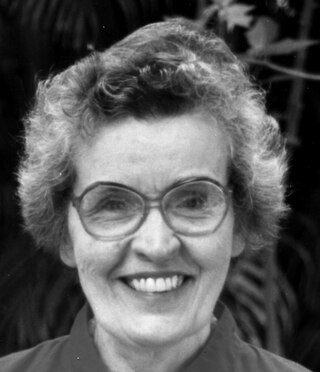The Juilliard School is a private performing arts conservatory in New York City. Founded by Frank Damrosch as the Institute of Musical Art in 1905, the school later added dance and drama programs and became the Juilliard School, named after its principal benefactor Augustus D. Juilliard.

Fiorello H. LaGuardia High School of Music & Art and Performing Arts, often referred to simply as LaGuardia or "LaG", is a public high school specializing in teaching visual arts and performing arts, located near Lincoln Center in the Lincoln Square neighborhood of the Upper West Side in Manhattan, New York City. Located at 100 Amsterdam Avenue between West 64th and 65th Streets, the school is operated by the New York City Department of Education, and resulted from the merger of the High School of Music & Art and the School of Performing Arts. The school has a dual mission of arts and academics, preparing students for a career in the arts or conservatory study as well as a pursuit of higher education.
The Orff Schulwerk, or simply the Orff Approach, is a developmental approach used in music education. It combines music, movement, drama, and speech into lessons that are similar to a child's world of play. It was developed by the German composer Carl Orff (1895–1982) and colleague Gunild Keetman during the 1920s. Orff worked until the end of his life to continue the development and spread of his teaching method.
The Mannes School of Music, originally called the David Mannes Music School and later the Mannes Music School, Mannes College of Music, the Chatham Square Music School, and Mannes College: The New School for Music, is a music conservatory in The New School, a private research university in New York City. In the fall of 2015, Mannes moved from its previous location on Manhattan's Upper West Side to join the rest of the New School campus in Arnhold Hall at 55 W. 13th Street.

Music education is a field of practice in which educators are trained for careers as elementary or secondary music teachers, school or music conservatory ensemble directors. Music education is also a research area in which scholars do original research on ways of teaching and learning music. Music education scholars publish their findings in peer-reviewed journals, and teach undergraduate and graduate education students at university education or music schools, who are training to become music teachers.

Molloy University is a private Roman Catholic university in Rockville Centre, New York. Initially founded as a school for women, it is now co-educational. It provides more than 50 academic undergraduate, graduate, and doctoral degree programs for over 4800 students.
The German educator Gunild Keetman was the primary originator of the approach to teaching music known as Orff Schulwerk. Keetman was responsible for most of the actual teaching that was done in the early stages of the movement, perhaps most prominently as the teacher for the radio and television broadcasts that popularized the Schulwerk throughout Germany in the 1950s.

Music education in the United States is implemented in many schools as a form of modern-day teaching. Music education is a field of study that focuses on the teaching and application of music in the classroom. As this addition to the curriculum progresses, the effects and implications to this course of study are being widely debated, especially the factors pertaining to. Researchers are able to follow its progression from its earliest known application within the field of academics.

Third Street Music School Settlement is the longest-running community music school in the United States. Founded in 1894, it is at 235 East 11th Street, New York City. Third Street has three main programs: a music & dance school, a music-infused Preschool, and a Partners program. It also works with New York City Department of Education on training Pre-K teachers in music education.

Simply Music is a music education organization licensing teachers at over 700 locations in twelve countries and serving an online self-study student community in 128 countries. Australian music educator Neil Moore founded it on the core belief that all humans are naturally musical. Simply Music offers programs for students from birth through old age, with the stated goal that "students acquire and retain music as a lifelong companion." Simply Music patterns its approach after primary language acquisition, where speaking comes first. In this it shares some philosophical ground with other developmental approaches like Kodály, Orff Schulwerk, and the Suzuki Method.

Special Music School is a K-12 public school that teaches music as a core subject on the Upper West Side of Manhattan, New York City. The school is run as a public/private partnership between the New York City Department of Education and Kaufman Music Center, a not-for-profit, multi-arts organization. The Department of Education funds the academic portion of the students' education, while the music program is funded by private donations through Kaufman Music Center.

Pine Technical and Community College (PTCC), formerly Pine Technical College, is a public community college in Pine City, Minnesota. PTCC is a member of the Minnesota State Colleges and Universities System, which comprises 31 state universities and community and technical colleges in Minnesota.

The Vancouver Academy of Music (VAM) is a Canadian music conservatory located in Vancouver, British Columbia. The school was founded as the Community Music School of Greater Vancouver in 1969 through efforts made by the Vancouver Community Arts Council. The school was originally located on West 12th Ave but relocated to the Music Centre in Vanier Park in May 1976. The school officially changed its name to the Vancouver Academy of Music in 1979. The VAM currently has two divisions of study, a college division for students wanting to pursue a performance career and a preparatory division for school-age children and adults.
Keith Warren Bissell was a Canadian composer, conductor, and music educator. He was particularly known for his choral music, which often implemented elements of Canadian folk music. A passionate educator, he was a pupil of Carl Orff and was influential in popularizing the Orff Schulwerk methodology within North America. From 1957 to 1958 he was President of the Ontario Music Educators' Association. He was conductor and artistic director of the National Youth Orchestra of Canada in 1970–1971. He also was vice-president of the Canadian Music Council for several years and president of the Canadian Music Centre from 1975 to 1977.

André de Quadros is a conductor, ethnomusicologist, music educator, and human rights activist.
The University of Kentucky College of Fine Arts is composed of four academic units: the School of Art and Visual Studies, the Department of Arts Administration, the School of Music, and the Department of Theatre and Dance. The Singletary Center for the Arts, the college's performing arts facility, supports the School of Music. The University of Kentucky Art Museum has a collection of more than 4,500 objects.

Isabel McNeill Carley was a published writer, editor, composer and music teacher. She is considered one of the leaders of the Orff Schulwerk when it began to take hold in the United States in the 1960s. As a co-founder of the American Orff-Schulwerk Association (AOSA), Carley contributed greatly to the organization's beginnings, serving as a board member and magazine editor. Carley devoted much of her life to musical instruction, publishing a series of books titled Recorder Improvisation and Technique.

Helene Fuld College of Nursing is a private nursing school in New York City. The college offers associate and comprehensive baccalaureate science degrees to Licensed Practical Nurses, Registered Nurses, and individuals who are not already nurses. The college is located in the East Harlem section of Manhattan in the Mount Morris Park Historic District across from Marcus Garvey Park. It was founded in 1945.
The Music Studio is a music school in Albany, NY that was founded in 1977 by Noel Ottery Liberty. Located at 1237 Central Avenue, the school has classes starting for children as young as two and has seen over 15,000 students since its founding. The school has five programs: Music for the Young, The Foundation Program, The Piano Program, Recreational Piano for Adults, and Classes for Children With Special Needs. Additionally, the school’s group The Music Studio Kids participates in performances throughout the year.











